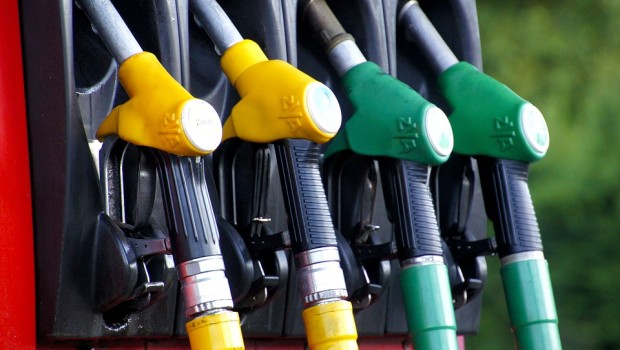Fuel prices have continued to fluctuate in the UAE during 2018 and as we have approached the sixth month of 2018, it is an ideal time to look at the fuel price trends observed so far this year. Since August 2015, fuel prices have increased for most of the months in the UAE, which has added to the financial worries of motorists on a tight budget. Making the situation even worse is the massive hike observed in fuel prices for the month of June 2018 that has been described as the biggest hike since August 2015.
It is important for motorists to understand what causes fluctuations in fuel prices and what kind of fuel price trends they can expect for the remaining months of 2018 and ahead. This information can help motorists in managing their fuel expense effectively by predicting the future fuel price trends themselves and planning the fuel budget accordingly.
A Comparison of Fuel Prices for the First Six Months of 2018
Fuel prices continued to fluctuate from one extreme to another during the first six months of 2018. The year started with a slight hike in fuel prices from the prices of December 2017. In January, the price of all types of petrol increased by 8 to 9 fills while the price of diesel received a significant hike of 13 fills. The prices were increased again in February and this time, the difference in prices from the last month was even bigger. In February, petrol prices increased by 12 to 13 fills while the diesel price increased by 16 fills.
The prices came down in March, but the difference in prices from last month was just 2 to 3 fills for all types of petrol and 6 fills for diesel. To the delight of motorists, petrol prices remained unchanged during April, however, diesel price was decreased by 3 fills. The relief in fuel prices proved to be short-lived as the fuel prices jumped again for the month of May and then in June as well. In May, prices for all types of fuel increased by 15-16 fills while in June fuel prices increased by 14-15 fills for all fuel types.
The Table below clearly shows the fuel price trends in 2018:

The fuel price trends from the start of 2017 suggest that fuel prices have increased in most of the months. In 2017, the prices for all types of fuel increased in 8 out of 12 months while the fuel prices have already increased four times during the first half of 2018. June fuel prices in 2018 have hit a new two and a half year high, which has made commuting in a private vehicle extremely costly in the UAE.
Also read: Top 5 Fuel-Efficient Cars under AED 60,000 in the UAE
Why Fuel Prices Fluctuate in the UAE?
Fuel prices in the UAE are now inclusive of the 5% VAT, which has been implemented in the UAE from January 2018. This addition of VAT in fuel prices has already proved to influence fuel prices significantly during 2018. Besides VAT, there are some other fundamental factors that influence fuel prices in the UAE. Understanding how fuel prices are set in the UAE and which factors influence fluctuations in prices can potentially help motorists preempt the future fuel prices and plan their budget accordingly to avoid financial worries.
Here are three fundamental factors that contribute towards changes in fuel prices every month in the UAE.
Brent Price
Motorists must know that fuel prices in the UAE are linked with the price of Brent, which is a global benchmark for crude oil. Fuel prices are set every month in line with the latest trend of Brent price, which means if the price of Brent increases, it leads to an increase in the UAE’s fuel prices and vice-versa. The price of Brent was trending high at the end of April and May, which caused a subsequent increase in fuel prices for the months of May and June.
Transportation Cost of Fuel
Fuel prices can also be affected by a change in the price of transportation costs of fuel. Any change in the transportation cost of fuel is approved by the Ministry of Energy in the UAE.
Platts Benchmarks
The fuel prices are set and influenced in the UAE by the Platts Benchmarks. The Ministry of Energy reviews the Platts Benchmarks at the end of each month before releasing the fuel prices for the upcoming month. Platts is a global organization that provides assessment and information about the price trends of gasoline products and crude oil in the international markets.
Future Prediction on Fuel Price Trends in the UAE
Fuel prices are forecasted to increase in the upcoming months of 2018 and in 2019 as well. According to the analysts at Bank of America Merrill Lynch, fuel prices will be at their highest level during mid-2019 in the UAE since the price of Brent is expected to record a massive hike during this period. The price of Brent is expected to trend at $80 per barrel on average during mid-2019, which will cause fuel prices to increase in the UAE. The future fuel price trends in the UAE don’t look encouraging for motorists on a tight budget, which increases the need for motorists to find ways of managing their fuel expense effectively.
To learn how you can save fuel-cost, read our blog titled, 7 Fuel-Saving Driving Tips for Motorists in the UAE.
If you are planning to sell your used car to buy a new one with advanced safety features and improved performance and fuel-economy, then don’t forget that with us, you can sell your used car fast in just 30 minutes while all the post-sale paperwork is handled by SellAnyCar.com’s team.



